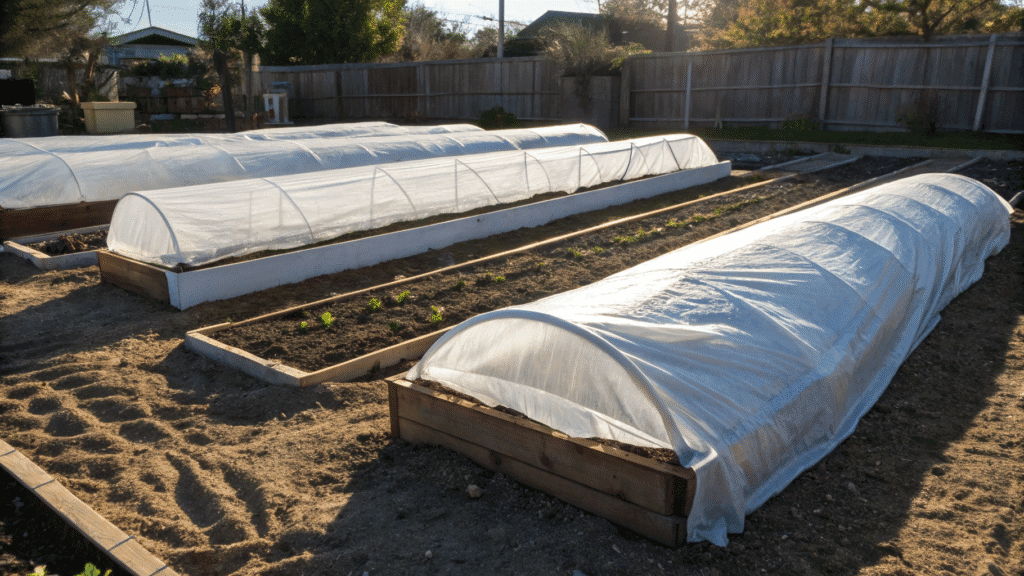You’ve spent weeks babying those heirloom tomato seedlings. You transplant them with care… only to find them wilting, yellowing, or swarmed by tiny black flies two weeks later. Heartbreaking, right? I’ve been there too.
The culprit? Pathogens and pests are lurking in your soil. But here’s the good news: Learning how to sterilize soil is like giving your plants a clean slate—and it’s easier than you think.
Sterilizing isn’t about nuking your soil into a dead wasteland. It’s a strategic reset. Think of it like hitting “restart” on a contaminated computer. You wipe out the bad guys—fungal spores, nematodes, weed seeds, and insect eggs—while keeping the soil’s structure intact. Whether you’re reusing last year’s potting mix, starting seeds, or rehabilitating garden beds, I’ll walk you through every step.
Table of Contents
Why Your Soil Needs a “Clean Start” (The Unseen War Beneath Your Plants)
Most gardeners don’t realize their soil is a battlefield. That bag of potting mix? Could contain fungus gnat eggs. That compost from your neighbor? Might harbor wilt spores.

Here’s what you’re fighting:
- The Silent Seedling Killer: Ever had trays of seedlings suddenly collapse? That’s damping-off disease (Pythium or Rhizoctonia). It spreads like wildfire in unsterilized soil. Sterilization stops it cold.
- The Hidden Root Saboteurs: Nematodes—microscopic worms—puncture roots, causing swollen knots and stunted growth. Sterilization breaks their lifecycle.
- The Weed Time Bomb: One teaspoon of garden soil can hold 500+ dormant weed seeds. Sterilize now or weed forever.
- The Potting Mix Trap: Reusing old container soil without sterilizing? You’re recycling diseases like fusarium wilt (which lives 7+ years in soil).
Real Talk: Sterilization does kill beneficial microbes too. But here’s the fix: After sterilizing, mix in 1 part compost to 4 parts soil. Those good guys bounce back fast!
6 Ways to Sterilize Soil (How to Sterilize Soil)
Method 1: Solarization (Let the Sun Do the Dirty Work)
Best for large garden beds or raised beds

Use this in July on your tomato beds. Clear plastic + summer sun = nature’s pressure cooker.
Step-by-step:
- Pull weeds, rake smooth, then SOAK the soil (dry dirt won’t heat well).
- Stretch clear 6-mil plastic tightly over the bed. Bury the edges deep—no peeking!
- Wait 4-6 blistering summer weeks. Want proof it’s working? Slide a soil thermometer under the plastic. You’re golden when it hits 125°F+ at 6″ deep.
- Pro tip: Double-layer plastic with an air gap between sheets. Boosts heat by 15°F!
Why is good?: Free energy! Kills 99% of pathogens down to 12 inches. Just don’t till afterward—you’ll resurrect deeper weed seeds.
Method 2: Oven Sterilization (Small-Batch Precision)
Perfect for seed starters

Your kitchen will smell like a rainforest—open windows!
Do this RIGHT:
- Moisten soil till it clumps lightly (not dripping).
- Spread ≤4″ deep in roasting pans. TIGHTLY foil-wrap tops (steam is key!).
- Bake at 200°F until soil hits 180°F (stick a meat thermometer in center). Hold 30 mins.
- CRITICAL: Turn off oven, crack the door, let soil cool INSIDE overnight. Uncovered soil = recontamination!
⚠️ Disaster Alert: NEVER sterilize soil with perlite, vermiculite, or synthetic fertilizers. They release toxic fumes! Stick to plain soil/compost/sand.
Method 3: Microwave Magic (Tiny Batch Hero)
For 1-2 seed trays only

Quick fix when you need sterile soil STAT:
- Fill glass bowl with 2 lbs damp soil. Cover with vented lid.
- Nuke 90 sec on high. STIR. Check temp—center must hit 180°F. Repeat in 30-sec bursts if needed.
- Seal bowl, wait 15 mins (steam finishes the job), then cool.
Life hack: Put a cup of water in the microwave. Prevents soil from scorching!
Method 4: Steam Power (The Pro’s Choice)
For serious gardeners with gear

Built a DIY steam box from an old cooler + wallpaper steamer:
- Layer soil in shallow trays inside the box.
- Pump steam in until soil hits 160°F for 30 mins (thermometer essential!).
Why steam beats oven: Gentler on soil structure. Kills pathogens at lower temps.
Method 5: Boiling Water Blitz (Spot Treatment Only)
For emergency weed patches

Pouring boiling water kills surface weeds/pathogens instantly. But it only penetrates 1-2 inches. Great for patio cracks, useless for beds.
Method 6: Chemicals (Last Resort!)
Please avoid unless desperate!

Hydrogen peroxide (1:3 ratio with water) can drench fungus gnat infestations. Bleach? Too risky—it nukes soil biology and lingers. I’ve seen plants wither from “rinsed” bleach soil. Just don’t.
When Sterilization is Non-Negotiable
Seed starting mixes: Non-negotiable. Baby plants have zero immunity.
Reused potting soil: Always! Especially after diseased plants.
“Mystery” compost: If your pile didn’t hit 140°F for 15+ days, sterilize it.
After soil-borne diseases: Fusarium? Verticillium? Sterilize or they’ll haunt you for years.
3 Mistakes That Ruin Sterilized Soil (I’ve Made #1!)
- Overheating: Bake soil >200°F? Congrats—you just made toxic, water-repellant “dirt concrete.” 180°F is the sweet spot.
- Uncovered cooling: Exposing hot soil to air = instant recontamination. Keep it sealed!
- Mixing compost too soon: Adding compost BEFORE sterilizing kills its microbiome. Do it AFTER.
The Golden Rule: Sterilize, Then Revitalize
Sterilized soil is a blank canvas—not a finished masterpiece. Here’s how I rebuild life:
- Mix in 20% compost after cooling (worm castings rock!).
- Add mycorrhizal fungi (like Dynomyco)—they supercharge root health.
- Avoid synthetics: Chemical fertilizers harm microbial rebound.
One last tip: Sterilize in summer for spring beds. Store cooled, bagged soil in a garage. You’ll thank yourself later!
Bottom line: Sterilizing soil isn’t just a chore—it’s your secret weapon against invisible garden enemies. Do it right, and you’ll swap heartbreak for harvests. Now go give your soil that fresh start!
Bonus: You may also need “Garden Soil Testers“


 ChatGPT
ChatGPT
 Perplexity
Perplexity
 Claude
Claude
Leave a Reply